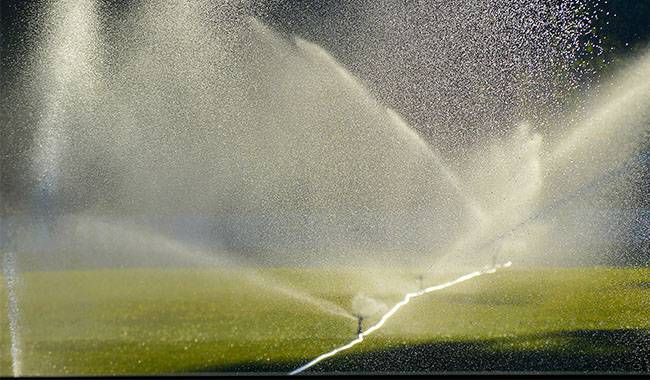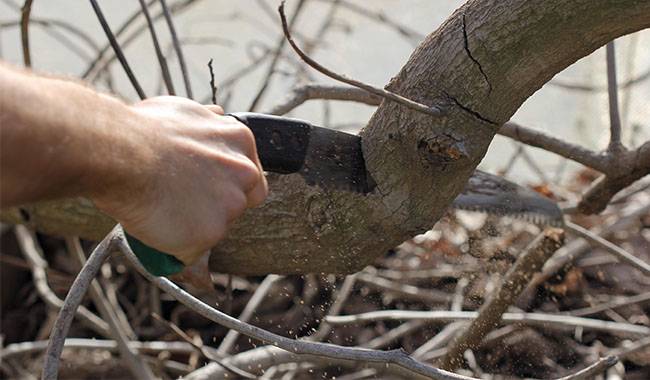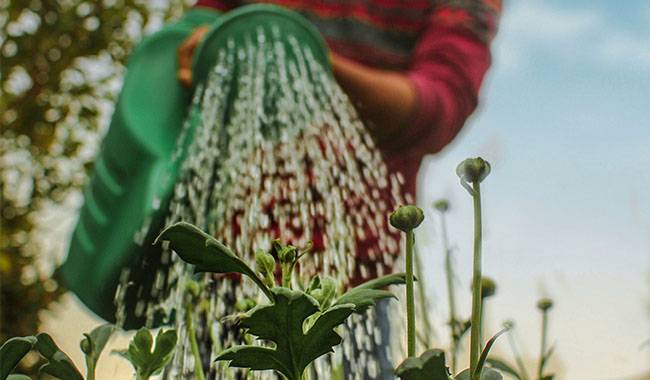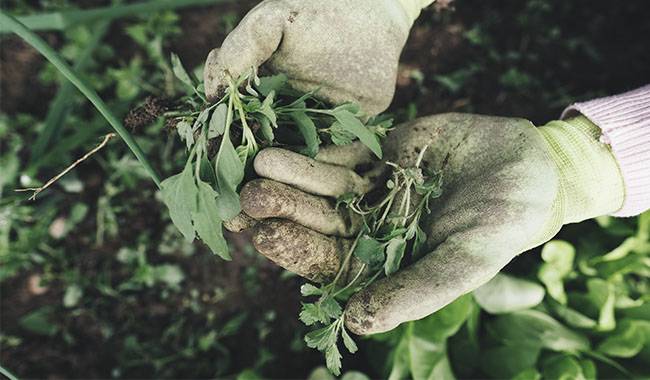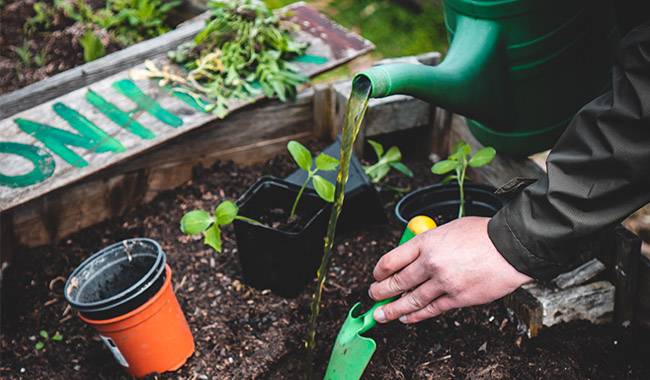
No one is immune to problems when it comes to growing houseplants. Intentionally or unintentionally, we all make mistakes in location or care. And we don’t always carefully inspect leaves and stems for signs of pests and diseases. In most cases, it is a timely inspection that allows you to detect growth disturbances or leaf damage and respond promptly quickly. But if correcting simple measures such as watering, drying the soil, washing, or folk remedies are not enough, you will have to use chemicals. The latest insecticides and fungicides are easy to use. But you should not forget safety precautions. You will learn how to use Pesticides Indoor in ThumbGarden’s article.
The range of products to help you deal with pests or diseases in houseplants continues to expand, as does the selection of growth promoters and special pesticides that regulate growth and root formation. Whether you are using fertilizer, activator, insecticide, fungicide, or miticide. You should not be negligent in any situation. Even the safest biological products must be used correctly. And observe the safety precautions described in detail by the manufacturer.
Even harmless fertilizers can be a source of trouble if they are accidentally spilled on skin or mucous membranes. And plant extracts or essential oils can cause serious allergic reactions. In addition, there is always the risk of damage to room ornaments or fabrics if they are sprinkled with pesticides.
Plant-based pesticides should be used only on plants – and with as much care as possible. There are some basic rules to avoid problems with all chemicals.
Chemical is not a substitute for care and cleaning
The promise of quick results from insecticides and fungicides is comforting to anyone, but there is no substitute for the care and “mechanical” treatment. Diseased plants require prompt treatment with special chemicals and basic preventive and care measures.
- Remove the insects from the plant by hand.
- Wipe the dust and dirt from the leaves and shoots.
- Remove dried or diseased leaves and dirt from the soil surface.
- Clean dirt from trays and pots.
- Spray; increase or decrease humidity.
Dust and dirt are the main enemies of plant health. Sanitary measures alone do not always solve the problem, such as spider mites or scale mites, but manual cleaning and care is the first step to victory and the best helper of “chemistry.”
Quarantine before treatment
If a plant is infested and any insecticide or fungicide will be applied to it, it must first be separated from the rest of the collection. Quarantine ensures that other plants in the house are not affected. It should be started before spraying or other treatments, even if the problem appears to be species-specific.
Research and study are the best weapons
No matter how well a product is advertised or who recommends it, it is worth checking its scope of use and its attributes. Carefully reading all the information on the instructions and labels (ingredients, safety levels, certificates, manufacturer information, application methods) will help prevent possible mistakes and ensure that you avoid unpleasant surprises due to ignorance.
The first thing worth checking is which plants you can use these products on and when. You do not want to use products that are not designed for indoor plants. You can be particularly wary of gardening products. Not all “chemicals” good for your garden are safe for indoor use.
Reading the instructions is a “tedious” step but important. And you shouldn’t ignore even the “little things” because your safety and the health of your plants often depend on them.
The effectiveness of pesticides depends on careful adherence to instructions
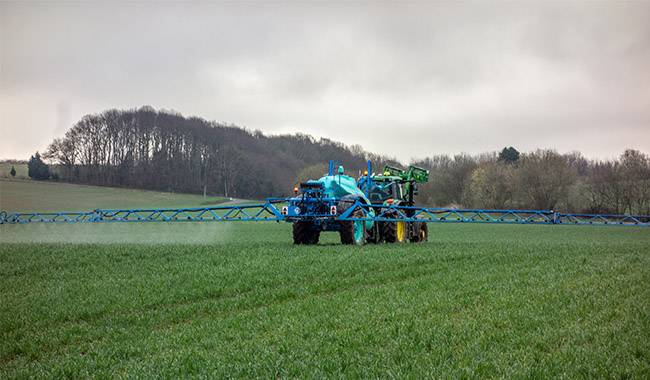
More is not better when using fertilizers and growth promoters (and even more so when using insecticides and fungicides). Each drug undergoes lengthy trials and tests during which its properties are investigated. And if you don’t follow the stated rates, concentrations, and application methods, you shouldn’t expect the expected properties to be fully expressed.
Fortified mixtures may not cause any harm to plants. But the damage to the environment, health, and pets is difficult to measure. Reduced concentrations are no better: pesticides that are not used within an effective recommended protocol may be wasted.
If the stated rates indicate too much product for your plants, it is perfectly acceptable to reduce the amount of water and product proportionately. However, make sure that unused pesticide residues can be stored or disposed of immediately after opening.
The treatment area must be enclosed
It is almost impossible to find an enclosed, empty room to spray insecticides or fungicides. But you also don’t want to “just” spray plants on a windowsill or nearby table. Insecticides and fungicides should be sprayed separately. Away from valuable furniture and decorations, resting places, and living areas – on special workbenches or chairs protected by aluminum foil, outdoors, or in well-ventilated areas (balconies, hallways, utility rooms, etc.). It is convenient to spray plants in the bathroom, where walls and surfaces can be cleaned immediately.
Please throw away expired pesticides
Expired medications are dangerous, even for simple fertilizers. It’s no coincidence that all manufacturers will give you such a precise statement about how long a product can be used without harming plants or the environment. Even organic and biological ingredients can unpredictably change their properties after this period of time, and you should not experiment with potting chemistry in this regard.
Do not mix pesticides
You should not mix different products for use on houseplants, except for multi-ingredient products that are mixed prior to use. Insecticide or fungicide treatments should not be applied along with an even feeding. Please don’t assume that mixing them is OK. Treatments with different chemicals should be “diluted” in time and paused long enough to observe how the plant feels and how a particular drug reacts.
Don’t forget about safety
You do not use chemicals on houseplants that require unique protective clothing. However, this does not mean that safety precautions should not be taken. Before you start handling plants, you should wear gloves and coveralls that can be sent to the laundry immediately (because some products leave permanent marks on textiles).
Respiratory protection is a measure that is rarely used in the room. However, since most insecticides and fungicides are sprayed in fairly fine atomizers, it is not a good idea to inhale micro-particles of pesticides at close range during treatment. A simple protective face shield can be perfect for filtering air and minimizing contact with the product.
If working fluids from fertilizers or other products contact your skin, wash it off immediately with plain soap. If it comes in contact with your eyes, rinse as soon as possible. If there are signs of mild irritation or suspicious reactions, you should consult a specialist.
Family members should also be protected. Fertilizers, acaricides, insecticides, and fungicides are not substances that children and pets should be allowed near. This also applies to the treatment itself and the time needed to dry the leaves.
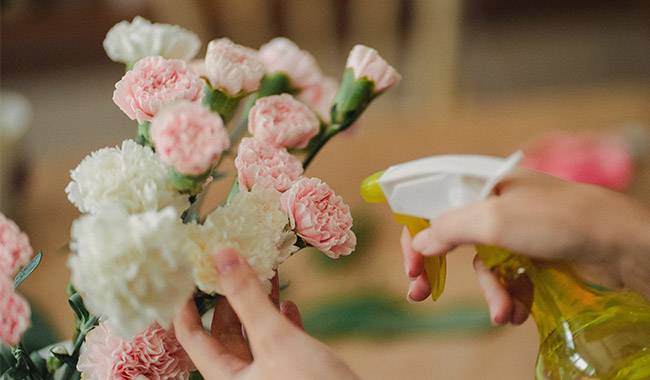
Storage of pesticides
Store all chemicals, including fertilizers, separately and avoid mixing them with food, medicines, household chemicals, herbal supplies, etc.
Storage locations for household plant chemicals should be cool and dark and out of reach of children and animals. Check the integrity of packaging regularly and note storage dates.
Please do not dispose of expired products with household waste and follow the manufacturer’s instructions for their safety level.
Clean up the site
Once all work on the plant has been completed, it is worth remembering to tidy up the work area. Leaves and solution residues should be removed immediately, remembering to wet clean all surfaces that may have been touched by the working solution, if possible. However, primary attention should be paid to utensils, containers, and tools. Rinsing with water is not enough: rinse all used instruments thoroughly with clean water and a mild detergent. Ventilation is an indispensable step after handling chemicals indoors.




